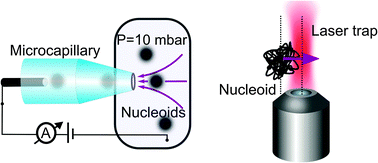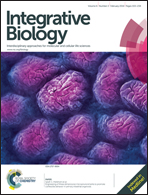Bacterial nucleoid structure probed by active drag and resistive pulse sensing
Abstract
Recent biophysical approaches have provided key insights into the enthalpic and entropic forces that compact the nucleoid in the cell. Our biophysical approach combines two complementary, non-invasive and label-free techniques: a precisely timed steerable optical trap and a high throughput microcapillary Coulter counter. We demonstrate the ability of the latter technique to probe the physical properties and size of many purified nucleoids, at the individual nucleoid level. The DNA-binding protein H-NS is central to the organization of the bacterial genome. Our results show that nucleoids purified from the Δhns strain in the stationary phase expand approximately five fold more than the form observed in WT bacteria. This compaction is consistent with the role played by H-NS in regulating the nucleoid structure and the significant organizational changes that occur as the cell adapts to the stationary phase. We also study the permeability to the flow of ions and find that in the experiment nucleoids behave as solid colloids.


 Please wait while we load your content...
Please wait while we load your content...